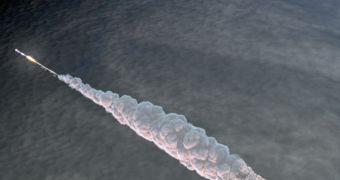According to the conclusions of several new studies published in the esteemed journal Science and Nature, it would appear that our planet is 10 times more likely to be hit by asteroids than previously thought. This hypothesis was developed after astronomers studied the Chelyabinsk meteor.
On February 15, 2013, a meteorite exploded over the city of Chelyabinsk, in Russia, producing injuries and significant damages. It was the first instance where such catastrophic events were captured on tape from multiple angles, as well as from orbiting satellites.
Scientists said that only 0.05 percent of the impactor's total mass of roughly 12,000 metric tons (13,200 tons), about 4 to 6 tons (8,800 to 13,200 pounds) made their way to the surface of the planet, and exploded. Around three quarters of the meteorite's mass was destroyed as it entered Earth's atmosphere.
According to studies conducted on fragments recovered from Russia, the Chelyabinsk asteroid was about 4.45 billion years old. Analysis of 15 videos that recorded its fiery descent through the sky revealed that it most likely originated in the Flora family of asteroids.
This group of space boulders is located in the Inner Asteroid Belt, between the orbits of Mars and Jupiter, an area that also includes the dwarf planet Ceres and the large asteroid Vesta. Experts say that the Chelyabinsk asteroid created the most massive airburst since the 1908 Tunguska impactor.
The new studies indicate that the Shockwave which preceded the explosion began developing at an altitude of about 90 kilometers (55 miles). When it reached an altitude of 30 kilometers (18 miles), the meteorite came at its brightest, hottest and fastest point.
Estimates indicate that the Chelyabinsk asteroid impacted the ground at a speed of 67,000 kilometers per hour, or 11.6 miles per second. The blast wave damaged areas spreading 90 kilometers (55 miles) in every direction from the point of impact, Space reports.
The explosion itself is estimated to have had an energy output equal to that of 500 kilotons of TNT. The atomic bombs the US launched at the end of World War II had an energy of 16 kilotons. The new studies demonstrate that existing models of asteroid impacts may be overestimating damages.
This happens because the models are based on nuclear explosions, where a single blast source is present. By comparison, meteorites break into numerous smaller pieces, spreading out the damage over larger areas at lower intensities.
The path of the Chelyabinsk asteroid was found to be similar to that of asteroid 86039, or 1999 NC43, a 2.2-kilometer (1.3-mile) wide space rock that zipped past Earth a few years ago. This suggests that the two objects were once part of the same asteroid, but fragmented for some reason.
Based on analysis of how the meteorite fragmented, experts determined that space rocks 10 to 50 meters (33 to 165 feet) in diameter are 10 to 50 times more likely to impact Earth than first thought.

 14 DAY TRIAL //
14 DAY TRIAL //